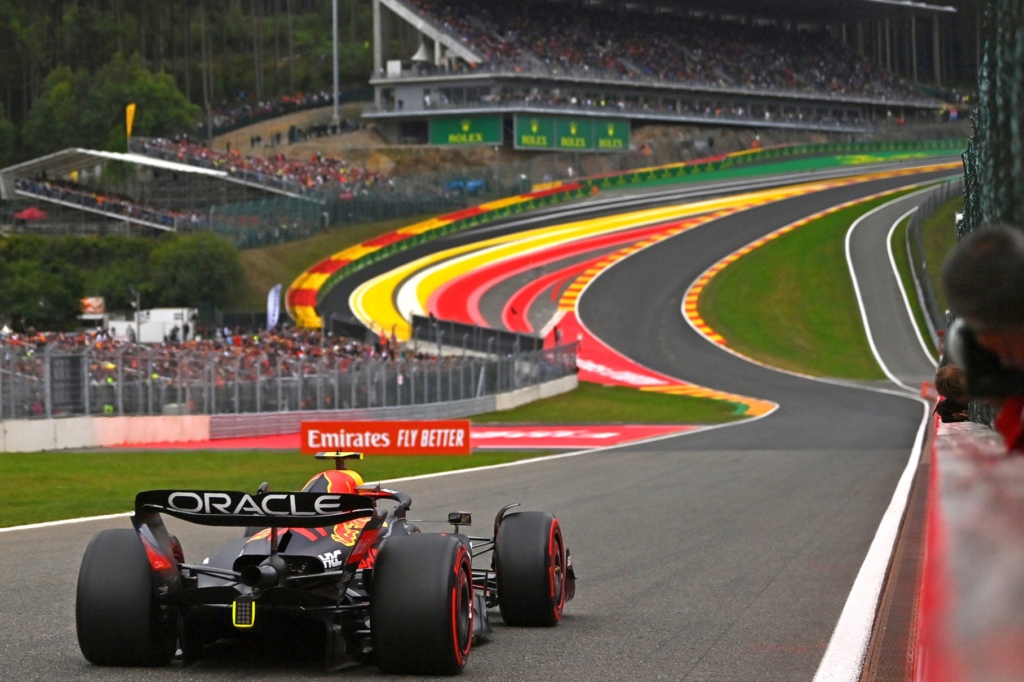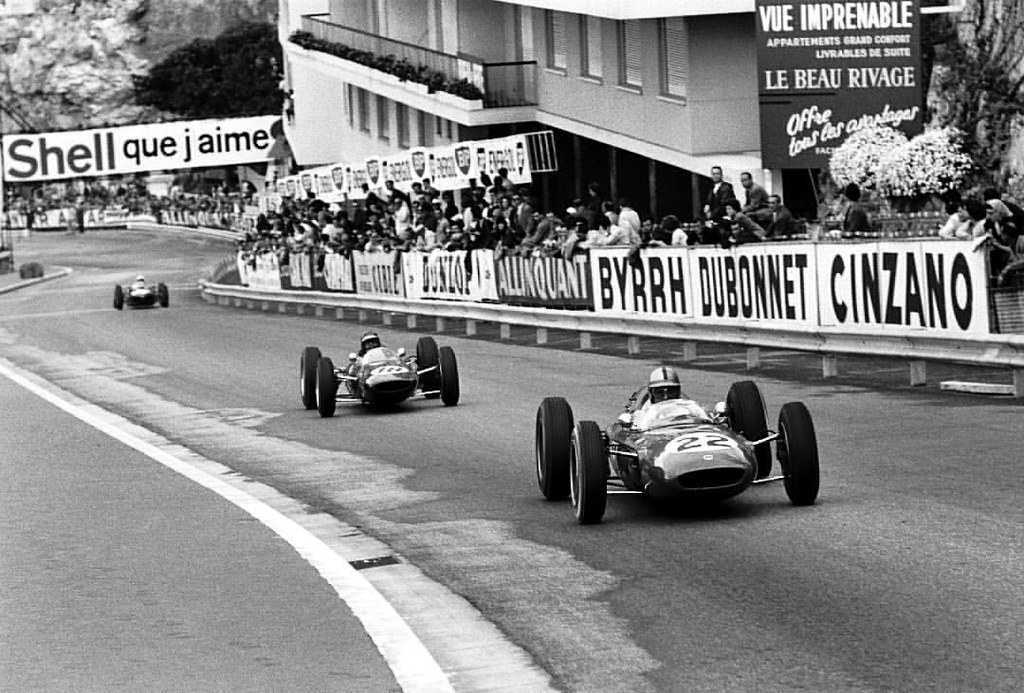Formula 1 tracks come in all shapes and sizes, but some stand out for their extreme elevation changes that pose unique challenges for drivers. But which F1 tracks have the biggest elevation changes? Mostly, it’s the old and classic F1 circuits. The tracks with biggest elevation changes are Spa Francorchamps, Red Bull Ring, Interlagos, Monaco and Suzuka.
In this guide, we highlight the F1 circuits with the 5 biggest elevation changes and explore how these dramatic rises and falls impact racing. Whether it’s the famous Raidillon climb at Spa or Suzuka’s thrilling rollercoaster layout, these tracks demand courage, commitment, and adaptability from the world’s best drivers.
The Impact of Elevation Change on F1 Tracks
Elevation change is a crucial factor in Formula 1 that significantly impacts the performance of F1 tracks. The variation in altitude affects engine power, aerodynamics, and tire wear, making it a key consideration for teams and drivers. Tracks with significant elevation changes, such as Spa-Francorchamps and the Red Bull Ring, require drivers to adapt their driving style and teams to adjust their car setup to handle the unique demands of the track.
The impact of elevation change on F1 tracks can be seen in several ways. For example, the Raidillon de l’Eau Rouge at Spa-Francorchamps requires teams to increase the front ride height of the car to handle the vertical compression forces, while the Red Bull Ring in Austria has track “warp” to contend with, creating a spiral effect. The Bahrain International Circuit, on the other hand, has a more subtle elevation change, but one that still requires drivers to adjust their braking and acceleration points.
Challenges for F1 Drivers
Elevation changes present several challenges for F1 drivers, including blind corners, compression, and car setup. Blind corners require drivers to rely on memory and instinct, and to judge the correct braking point, turn-in, and apex. Compression affects the car’s balance and grip, and drivers must adapt their driving style to manage these changes in handling.
The physical demands of driving on tracks with elevation changes are also significant. Drivers must contend with high-speed sections, steep slopes, and significant elevation changes, which can put a strain on their bodies. The Circuit de Barcelona-Catalunya, for example, has a highest point of 43 meters and a lowest point of 25 meters, making it a physically demanding track for drivers.
Which F1 Tracks Have The Biggest Elevation ChangeS
1. Spa-Francorchamps, Belgium – 102.2m
With an elevation change of 102.2 meters from its highest to lowest point, Spa-Francorchamps boasts both the longest and most dramatically undulating lap of any current F1 circuit. This challenging 7km track mixes lengthy flat-out sections with steep climbs and plunging descents that push drivers to the very edge. Teams must adjust their car set up to handle the unique demands of tracks with significant elevation changes, optimizing handling for the steep gradients at Spa-Francorchamps.
The Infamous Eau Rouge/Raidillon Complex
The most iconic feature at Spa is the Eau Rouge/Raidillon sequence – a sharp left-right flick that rapidly transitions into a steep uphill right hander. As drivers approach this section at such high speeds, nearly 300km/h, it takes immense courage to keep the throttle pinned through Eau Rouge as the track drops away. Hitting the compression at the bottom unsettles the car, before it climbs Raidillon with vertical forces approaching 5G.

Other Key Areas
Elsewhere, the run from La Source hairpin down to Eau Rouge features a noticeable descent before the rapid climb back up. The sweeping uphill left at Turn 7 also challenges drivers to carry maximum speed onto the long Kemmel straight. And the winding plunge down to the tight Bus Stop chicane tilts cars heavily, testing traction and grip at every turn.
Impact on Racing Due to Significant Elevation Changes
Spa’s extreme elevation changes make judging braking points very difficult, as the constantly undulating track plays tricks visually. The high-speed compressions also make the cars more nervous under braking. On the long straights, power deficits are exacerbated uphill and surpluses increased downhill. With capricious weather thrown in the mix, Spa provides the ultimate rollercoaster ride. This is particularly surprising considering Spa has the biggest difference in elevation change on the calendar, resulting in extreme vertical compression forces on F1 cars, especially during high-speed sections like the Raidillon de l’Eau Rouge.
2. Red Bull Ring, Austria – 63.5m
Considering its modest length, the Red Bull Ring packs a significant amount of obvious elevation change into its layout. Over a lap of just 4.3km, the track rises and falls by 63.5m – close to the height of the Leaning Tower of Pisa!
The Uphill Esses & Rollercoaster Final Sector at the Highest Point
Following the steep climb from Turn 1 to Turn 3, the drivers experience pronounced ‘falling away’ sensations through the quick left-right sequence. The rapid downhill Esses test car balance and driver courage as the track seems to disappear from beneath. After the flat left hander at Turn 4, the circuit begins its winding downhill trajectory all the way to the final corners. This plunging rollercoaster ride, with its unique track characteristics including elevation changes, challenges suspension and requires measured throttle application to prevent wheelspin.
Heavy Braking & Traction Zones
The two sharp hairpin rights at Turns 1 and 3 are key overtaking spots, thanks to the uphill approach helping braking and the downhill exit aiding traction. Finding the right compromise between maximizing vMax (top speed) on the straights and optimizing grip through the twisting infield sector is also crucial to success at the Red Bull Ring.
Impact on Racing
The frequent elevation changes make the track seem narrower and limit visibility, increasing the challenge. Ride heights need to be raised to prevent bottoming out through the compressions. Engine power variances on the straights are also greater with a 63m swing in altitude. All told, mastering the unfaltering terrain is vital to stringing together a quick lap.
3. Interlagos, Brazil – 43m
The legendary Interlagos circuit certainly lives up to its well-earned reputation for being an intense rollercoaster ride. Over just 4.3km, the track features a significant elevation change between its highest and lowest point, rising and dipping by up to 43 meters, subjecting cars and drivers to extreme forces and challenges.
The Senna Esses & Descents to Juncao
From the very first corner, Interlagos keeps drivers on edge. After the off-camber Turn 1 comes the twisting, undulating Senna Esses sequence – named after local hero Ayrton. Rapid direction changes combined with covering terrain attacks car stability. Then from the left hook at Turn 5, the drivers plunge downhill all the way to the low point at Juncao.

Key Braking & Traction Zones
The flat-out blast uphill from Juncao tests engine power before heavy braking for the banked Descida do Lago turn. Traction is also vital out of the slow final corner to maximize speed down the start/finish straight. Ride height and roll stiffness need significant tuning to handle Interlagos’s dips and crests.
Impact on Racing
Interlagos’s rollercoaster layout provides abundant overtaking opportunities into Turns 1, 4 and 5 as cars run offline over bumps under braking. The rapid elevation changes mid-corner are also hugely challenging, altering grip with every phase. Overall, Interlagos delivers a short yet scintillating lap that pushes drivers to their physical and mental limits.
4. Monaco, Monaco Principality – 42m
Despite being the shortest F1 circuit, the Monaco Grand Prix has one of the highest elevation changes on the calendar. Drivers go from the start uphill all the way to the casino, just to descent to the marina section. The track elevation makes the circuit even more difficult and challenging for drivers. The Monaco Grand Prix is known as the jewel of the F1 crown, and it has hosted 70 F1 races already.
The Tricky Beau Rivage section
One of the few spots where overtaking is possible is the run uphill to Massenet and Casino section. The Beau Rivage pretends to be a straigh line, but has tiny twists, which can catch drivers off guard, just like it did with Kevin Magnussen and Sergio Perez in the 2024 Monaco Grand Prix.

Breaking into Portier
The downhill approach to Portier turn is quite difficult for various reasons. Not only the drivers need to nail the exit, in order to gain speed in the tunnel section, but also the breaking point is on quite steep downhill part.
The blind entries caused by elevation changes and narrow track, catch drivers out, especially in wheel-to-wheel dice. This makes the Monaco Grand Prix so difficult, yet so thrilling, especially during qualifying sessions.
5. Suzuka, Japan – 40.4m
As a drivers’ and riders’ favorite figure high in most F1 polls, Suzuka beautifully combines fast sweeps and challenging switchbacks with plenty of elevation changes across a single lap. The track characteristics, including these elevation changes, challenge both drivers and cars, requiring precise adjustments to the car’s setup. Despite a modest length, the track still packs in over 40 meters of vertical ups and downs.
The Iconic Suzuka Esses
Following the high-speed Turn 1, the drivers enter Suzuka’s signature challenge – the Esses sequence. This sinuous left-right-left complex snakes its way downhill, dropping the cars down rapidly with minimal time to react. The Esses test car stability and engine response as the track falls away with each flick of the wheel.
Heavy Braking & Traction Zones
The Degner 1 and 2 combination also provide excitement, with the rapid downhill approach making the hairpin right extra challenging under braking. Traction is vital exiting the final chicane and through 130R as the track winds downhill towards the start/finish straight. Tuning mechanical grip is crucial to taming Suzuka’s terrain.
Elevation Changes and Racing Strategy
Elevation changes can impact racing strategy in F1 races and qualifying. The undulating nature of some tracks creates more than one line, creating opportunities for overtaking or mistakes. The elevation changes and unsighted entries create a defined racing line, depending on the local topography. Safety and visibility are further factors for drivers to consider, as there are several sections that are unsighted.
The Yas Marina Circuit, for example, has a significant elevation change between the highest and lowest points of the track, which can affect tire wear and car balance. The Baku City Circuit, on the other hand, has a unique combination of high-speed sections and steep slopes, making it a challenging track for drivers to navigate.
In terms of car setup, teams must find the right compromise to handle the varying demands of elevation changes. This can involve adjusting the car’s aerodynamics, suspension, and tire compound to optimize performance. The Red Bull Ring, for example, requires teams to adjust their car setup to handle the track’s unique “warp” and spiral effect.
Overall, elevation changes are a critical factor in F1, impacting track performance, driver challenges, and racing strategy. Teams and drivers must adapt to these changes to succeed on the track.
Impact on Racing
The flowing descents through Suzuka’s Esses reward bravery and commitment, making them an overtaking hotspot. Adaptability is essential across a lap as the constantly changing vertical forces alter grip and balance. For spectators, the dips and crests lend variation to views, while challenging drivers to the maximum.

